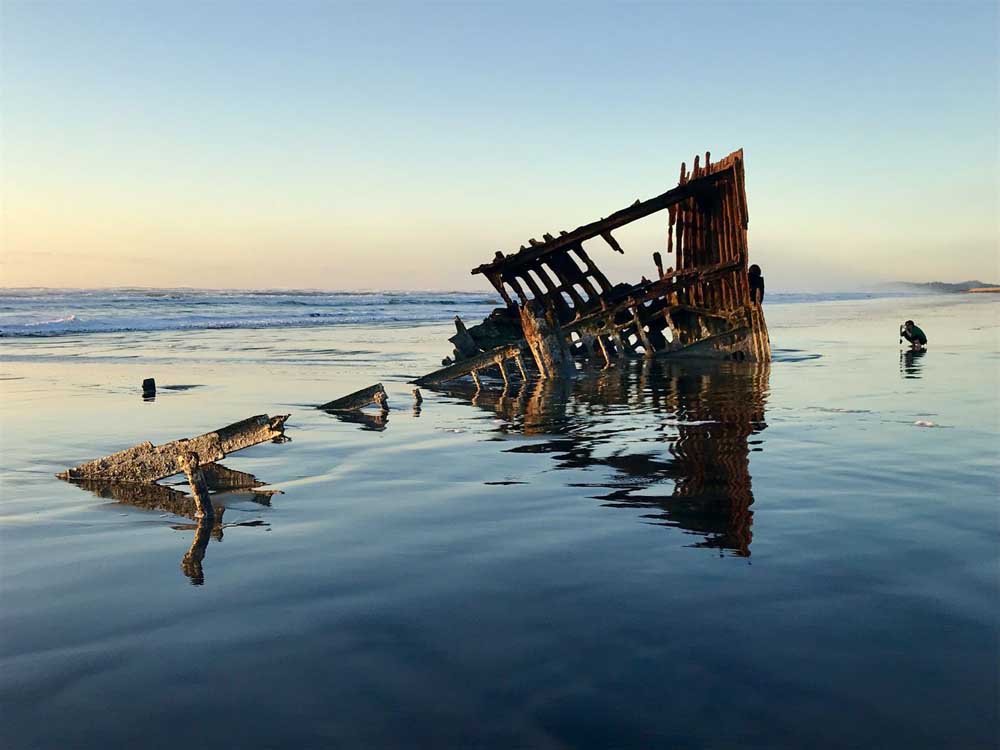Mapping shipwrecks at the Graveyard of the Pacific
Published 12:11 pm Monday, March 8, 2021

- The sun sets over the wreck of the Peter Iredale at Fort Stevens State Park.
The Pacific Northwest coastline has long been fraught with danger, threatening all who dare to set sail off its shores. One area in particular has become so notorious over the centuries that it’s earned a grim moniker all its own: the Graveyard of the Pacific.
To give some sense of this level of danger, The Oregonian has mapped 238 of the most significant shipwrecks near the mouth of the Columbia River and along the Oregon and Washington state coast, between 1725 and 2005, pulled from one of the definitive texts on the subject: “Pacific Graveyard” by James Gibbs.
The author, maritime historian and lighthouse keeper in the Pacific Northwest wrote about shipwrecks up and down the coast. Gibbs served as a lighthouse keeper at the Tillamook Rock Lighthouse, and built his own private lighthouse, the Cleft of the Rock Light, near Yachats. He wrote more than a dozen books in his career, and “Pacific Graveyard” was among his best known.
The shipwrecks he tracked down around the Columbia River entrance resulted in at least 535 deaths, though the toll is likely much higher. Historical records of some shipwrecks simply say that “all lives were lost,” and are counted here as one fatality for lack of better information.
There were also many more incidents than the map indicates. The Columbia River Maritime Museum in Astoria estimates approximately 2,000 vessels have sunk in the area since 1792, including many smaller boats that wrecked at the mouth of the Columbia. This map shows some of the most dramatic and deadly shipwrecks that occurred as settler colonists began to arrive to the region in droves over the 19th century, continuing as industry increased shipping traffic in the Pacific Northwest the following century.
For generations earlier, the stormy river mouth was part of an area populated by the Clatsop tribe of the Chinookan peoples, a group of interconnected indigenous communities who lived along the lower Columbia River.
The Chinook were highly skilled at navigating the body of water that many on its lower stretches called wimahl, meaning “big river,” using dugout canoes carved from enormous cedar logs. Europeans and Americans, who first entered the river mouth in 1792, struggled mightily in their massive ships, losing many lives on their quest to expand industry and white settlement to the Pacific Northwest.
Over the ensuing two centuries, there were many tragedies, much wreckage and a fair amount of drama as ships crashed, burned and exploded on their way up what would soon become the Oregon and Washington coast.
The “graveyard” is considered to range from Tillamook Bay in Oregon up the Washington coast to Vancouver Island, an area that’s home to many rocky reefs and shorelines. But perhaps the most treacherous area lies at the mouth of the Columbia River.
Straddling the border between Oregon and Washington, the mighty river mouth is home to shifting sand bars, high seas and heavy winds that combine to create a nightmare for ships entering from the ocean.
The number of annual shipwrecks peaked in the middle of the 19th century, but continued to be a regular problem into the 1960s. The advent of GPS and its preceding technological advancements helped maritime navigation immensely, effectively ending the age of shipwrecks at the mouth of the river.
That doesn’t mean the Graveyard of the Pacific became safe. Even today, vessels entering the mouth of the river are guided by the Columbia River Bar Pilots, an organization founded in 1846 to help keep ships afloat. The U.S. Coast Guard also stays busy rescuing vessels in distress — at the beginning of crabbing season in February, rescuers saved crews from three fishing boats in one day.
Although the major shipwreck era has passed, the stormy, violent nature of the Pacific Northwest coast ensures that the Graveyard of the Pacific remains very much alive.
Check out theninteractive maps of shipwrecks online at: projects.oregonlive.com/shipwrecks






